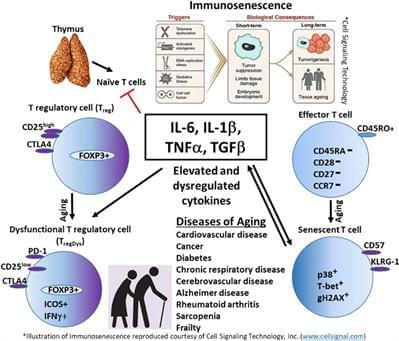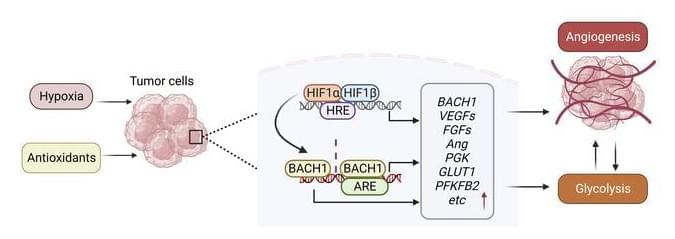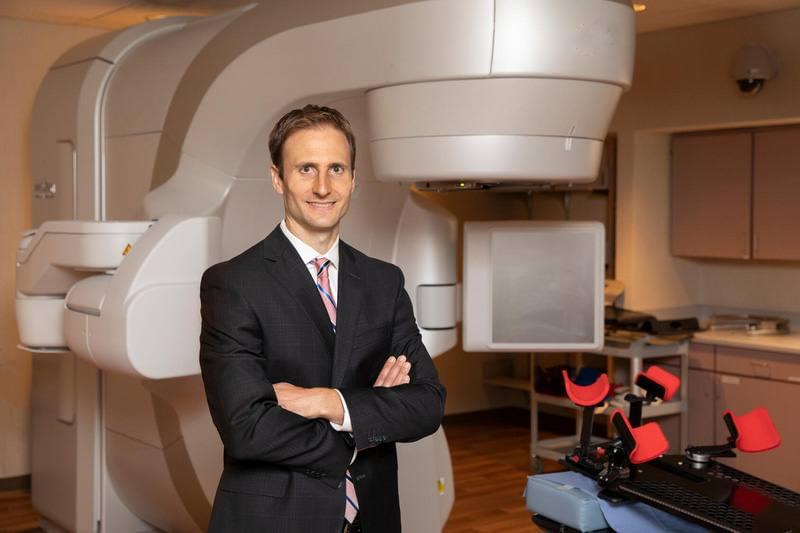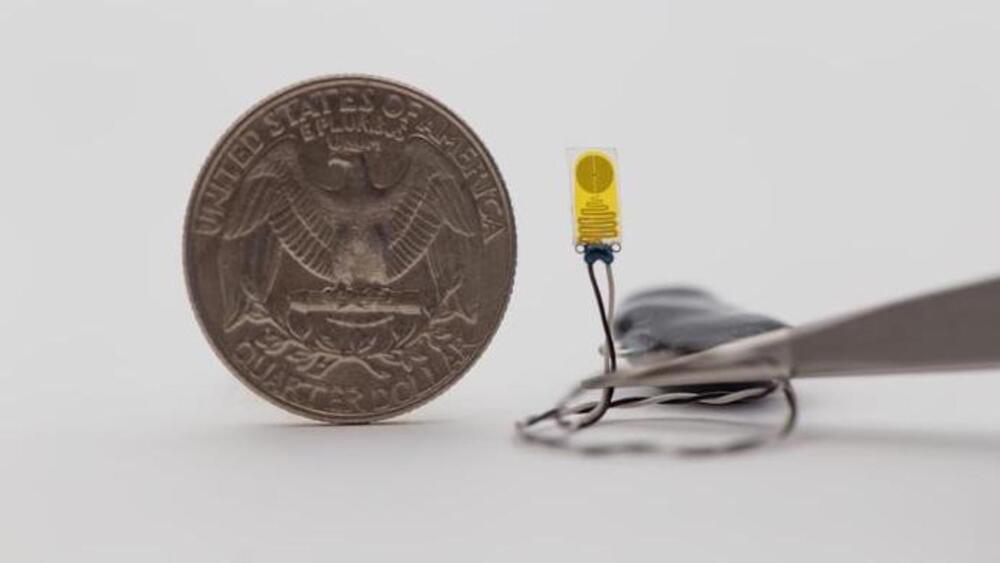Archive for the ‘biotech/medical’ category: Page 551
Sep 9, 2023
Could your gut microbiome shape your teenage years? New study dives into the lifelong health impact
Posted by Shubham Ghosh Roy in categories: biotech/medical, health, neuroscience
Research explores how the gut microbiota impacts critical areas of adolescent development, including mental health, metabolism, and skeletal growth. It suggests that understanding these interactions could lead to microbiome-based treatments for optimal growth and maturation.
Sep 9, 2023
Nanotechnology-Boosted Biomaterials for Osteoarthritis
Posted by Omuterema Akhahenda in categories: biotech/medical, chemistry, engineering, health, nanotechnology
 Osteoarthritis (OA) is a prevalent global health concern, posing a significant and increasing public health challenge worldwide. Recently, biomaterials have emerged as a highly promising strategy for OA therapy due to their exceptional physicochemical properties and capacity to regulate pathological processes. However, there is an urgent need for a deeper understanding of the potential therapeutic applications of these biomaterials in the clinical management of diseases, particularly in the treatment of OA. In this comprehensive review, we present an extensive discussion of the current status and future prospects concerning biomaterials for OA… More.
Osteoarthritis (OA) is a prevalent global health concern, posing a significant and increasing public health challenge worldwide. Recently, biomaterials have emerged as a highly promising strategy for OA therapy due to their exceptional physicochemical properties and capacity to regulate pathological processes. However, there is an urgent need for a deeper understanding of the potential therapeutic applications of these biomaterials in the clinical management of diseases, particularly in the treatment of OA. In this comprehensive review, we present an extensive discussion of the current status and future prospects concerning biomaterials for OA… More.
Herein, in this review, we summarize the advanced strategies developed for enhancing OA therapy based on the biomaterials. We conducted a comprehensive literature search using relevant databases such as PubMed, Scopus, and Web of Science. The search was focused on peer-reviewed articles and research papers published within the last ten years (from 2013 to 2023). We utilized specific keywords related to biomaterials”, biomaterials” and “osteoarthritis therapy” to retrieve relevant studies. First, we provide an overview of the pathophysiology of OA and the limitations of current treatment options. Second, we explore the various types of biomaterials which have been used for OA therapy, including nanoparticles, nanofibers, and nanocomposites. Third, we highlight the advantages and challenges associated with the use of biomaterials in OA therapy, such as toxicity, biodegradation, and regulatory issues. Finally, advanced biomaterials-based OA therapies with their potential for clinical translation and emerging biomaterials directions for OA therapy are discussed.
Characteristics of Biomaterials
Nanotechnology-boosted biomaterials have attracted considerable attention in recent years as promising candidates for revolutionizing the field of therapeutics.12,13 These materials combine the unique properties of nanotechnology with the versatility and biocompatibility of biomaterials, offering numerous advantages over existing therapeutic approaches. Nanotechnology enables the precise engineering of biomaterials at the nanoscale, allowing for the encapsulation and controlled release of therapeutic agents, such as drugs and growth factors.14–17 This feature facilitates targeted and sustained drug delivery to specific sites within the body, reducing systemic side effects and enhancing treatment efficacy. In the context of OA, this targeted drug delivery can be utilized to deliver anti-inflammatory agents or disease-modifying drugs directly to affected joint tissues, promoting tissue repair and alleviating symptoms. Furthermore, biomaterials can be designed to mimic the native tissue environment, thereby enhancing their biocompatibility and reducing the risk of adverse reactions or immune responses.18 This characteristic is crucial for successful integration and long-term functionality of biomaterials in biomedical applications. Moreover, nanomaterials can facilitate tissue regeneration by stimulating cellular responses and promoting tissue growth.19 In the context of OA, biomaterials can assist in cartilage repair and regeneration, potentially slowing down disease progression and improving joint function.3 In addition, nanotechnology allows for the customization of biomaterials with a wide range of physical, chemical, and biological properties.13 This flexibility enables the development of multifunctional biomaterials that can simultaneously perform multiple tasks, such as drug delivery, imaging, and tissue regeneration. These advantages collectively contribute to their potential as innovative solutions in addressing various biomedical challenges and improving patient outcomes. In this section, we will discuss some of the key properties of biomaterials and their impact on OA treatment.
Continue reading “Nanotechnology-Boosted Biomaterials for Osteoarthritis” »
Sep 9, 2023
Inflammation, Immune Senescence, and Dysregulated Immune Regulation in the Elderly
Posted by Shubham Ghosh Roy in categories: biotech/medical, life extension
Although the German scientist Hanns Kaiser published a number of articles in the 1970s relating inflammation to diseases in the elderly (Kaiser, 1971), the last 20 years have seen a burst in the study of the aging immune system, inflammation and the associated diseases. One of the most iconic studies in aging and immunity was the OCTO and NONA longitudinal study of healthy 80–90 year old people that took place in Jonkoping Sweden in the 1990s (Wikby AJ and Ferguson, 2003). These studies were unique for several reasons. First, they were longitudinal studies of elderly individuals. Second, the 80-and 90-year-olds were very healthy. As people age, they naturally acquire more disease and it becomes increasingly difficult to distinguish the effects of disease vs. aging on the immune parameters being measured. To overcome these confounders, the OCTO and NONA immune longitudinal study was a community population-based study that continually and carefully evaluated individual health parameters. Study participants had normal cognition, were not on drugs that would influence their immune responses, and were non-institutionalized (Wikby AJ and Ferguson, 2003). Several important findings resulted from these studies; 1) the establishment of an Immune Risk Profile (IRP) based on altered CD4/CD8 T cell ratios (decreasing CD4+ T cell numbers and often increasing CD8+ T cell numbers) (Wikby et al., 1998) and 2) germane to this review, the discovery of a link between elevated plasma IL-6 levels, mortality and IRP in the very old (Wikby et al., 2006).
An optimal immune response requires the appropriate interaction between the innate and the adaptive arms of the immune system as well as a proper balance of activation and regulation. After decades of life, the aging immune system is continuously exposed to immune stressors and inflammatory assaults that lead to immune senescence (Salama et al., 2014; Aiello et al., 2019; Di Micco et al., 2021). In this review, we will discuss inflammaging in the elderly, specifically concentrating on IL-6 and IL-1β in the context of T lymphocytes, and how inflammation is related to mortality and morbidities, specifically cardiovascular disease and cancer. Although a number of studies suggests that the anti-inflammatory cytokine TGF-β is elevated in the elderly, heightened inflammation persists. Thus, the regulation of the immune response and the ability to return the immune system to homeostasis is also important. Therefore, we will discuss cellular alterations in aging, concentrating on senescent T cells and CD4+ CD25 + FOXP3+ regulatory T cells (Tregs) in aging.
Inflammaging is a phenomenon of inflammatory pathogenesis characterized by chronic low-grade inflammation, and is a significant risk factor for morbidity and mortality in elderly people. Claudio Franceschi first coined the term “inflammaging” in the manuscript “Inflamm-aging.
Sep 9, 2023
Scientists use video games to measure the eye-brain-body connection
Posted by Shubham Ghosh Roy in categories: biotech/medical, entertainment, food, health, neuroscience
Video games could give ophthalmologists an easy window not into the soul, but into eye health and the eye-brain-body connection — the three-way reciprocal communication that influences our actions.
“Infusing science into games is like sneaking broccoli into ice cream,” said Khizer Khaderi, MD, a clinical associate professor of ophthalmology. “It removes the resistance to do something that may not be viewed as fun, such as eating vegetables.” Or in this case, evaluating your vision health.
In a Stanford Medicine-led study, researchers employed video games to evaluate participants’ field of vision and visual stamina, their ability to distinguish contrast, and other factors that can indicate common eye diseases.
Sep 9, 2023
Paige Announces Collaboration with Microsoft to Build the World’s Largest Image-Based AI Model to Fight Cancer
Posted by Arthur Brown in categories: biotech/medical, business, robotics/AI
NEW YORK—(BUSINESS WIRE)— Paige, a technology disruptor in healthcare, has joined forces with Microsoft in the fight against cancer, making headway in their collaboration to transform cancer diagnosis and patient care by building the world’s largest image-based artificial intelligence (AI) models for digital pathology and oncology.
“Unleashing the power of AI is a game changer in advancing healthcare to improve lives.” Tweet this
Paige, a global leader in end-to-end digital pathology solutions and clinical AI, developed the first Large Foundation Model using over one billion images from half a million pathology slides across multiple cancer types. Paige is developing with Microsoft a new AI model that is orders-of-magnitude larger than any other image-based AI model existing today, configured with billions of parameters. This model assists in capturing the subtle complexities of cancer and serves as the cornerstone for the next generation of clinical applications and computational biomarkers that push the boundaries of oncology and pathology.
Sep 9, 2023
Abstract: Lung cancer progression relies on angiogenesis
Posted by Arthur Brown in category: biotech/medical
Which is a response to hypoxia typically coordinated by hypoxia-inducible transcription factors (HIFs); but growing evidence indicate that transcriptional programs beyond HIFs control tumor angiogenesis. Here we show that the redox-sensitive transcription factor BTB and CNC homology 1 (BACH1) controls the transcription of a broad range of angiogenesis genes. BACH1 is stabilized by lowering reactive oxygen species levels; consequently, angiogenesis gene expression in lung cancer cells, tumor organoids, and xenograft tumors increased substantially following vitamin C and E and N-acetylcysteine administration in a BACH1-dependent fashion under normoxia. Moreover, angiogenesis gene expression increased in endogenous BACH1–overexpressing cells and decreased in BACH1-knockouts in the absence of antioxidants.
Sep 8, 2023
Mayo Clinic study reveals proton beam therapy may shorten breast cancer treatment
Posted by Shubham Ghosh Roy in category: biotech/medical
ROCHESTER, Minn. — In a randomized trial, published in The Lancet Oncology, Mayo Clinic Comprehensive Cancer Center researchers uncover evidence supporting a shorter treatment time for breast cancer patients. The study compared two separate dosing schedules of pencil-beam scanning proton therapy, the most advanced type of proton therapy known for its precision in targeting cancer cells while preserving healthy tissue to reduce the risk of side effects.
Survival rates for breast cancer continue to improve due to advances in diagnosis and treatment, leading to increasing emphasis on reducing the long-term toxicity of cancer treatment, including radiotherapy.
Prior to this study, all patients treated with proton postmastectomy radiotherapy (PMRT) had received a conventional 25-to 30-day course delivered five days per week over five to six weeks. The researchers hoped to demonstrate that condensing the course of proton beam therapy, a form of particle therapy that could spare the heart and lungs from radiation damage, may result in a similar side effect profile.
Sep 8, 2023
Exercise-induced hormone irisin may reduce Alzheimer’s disease plaque and tangle pathology in the brain
Posted by Shubham Ghosh Roy in categories: biotech/medical, health, neuroscience
Researchers who previously developed the first 3D human cell culture models of Alzheimer’s disease (AD) that displays two major hallmarks of the condition—the generation of amyloid beta deposits followed by tau tangles—have now used their model to investigate whether the exercise-induced muscle hormone irisin affects amyloid beta pathology.
As reported in the journal Neuron, the Massachusetts General Hospital (MGH)–led team has uncovered promising results suggesting that irisin-based therapies might help combat AD.
Physical exercise has been shown to reduce amyloid beta deposits in various mouse models of AD, but the mechanisms involved have remained a mystery.
Sep 8, 2023
Bluetooth-enabled device warns if body rejects a new organ
Posted by Gemechu Taye in category: biotech/medical
The device is the size of a fingernail, is Bluetooth-enabled, and has a coin battery.
After an organ transplant, the body either accepts the organ or rejects it. All patients have some amount of acute rejection, but hyperacute rejection is when the body vehemently rejects the organ and it must be removed immediately to save the life of the patient. And then there’s chronic rejection, which can take many years as the body’s immune response towards the new organ slowly damages the transplanted tissues or organ.
So, how do we detect early on that an organ transplant has failed? The gold standard is currently via a biopsy, performed periodically to detect rejection early before symptoms develop.















